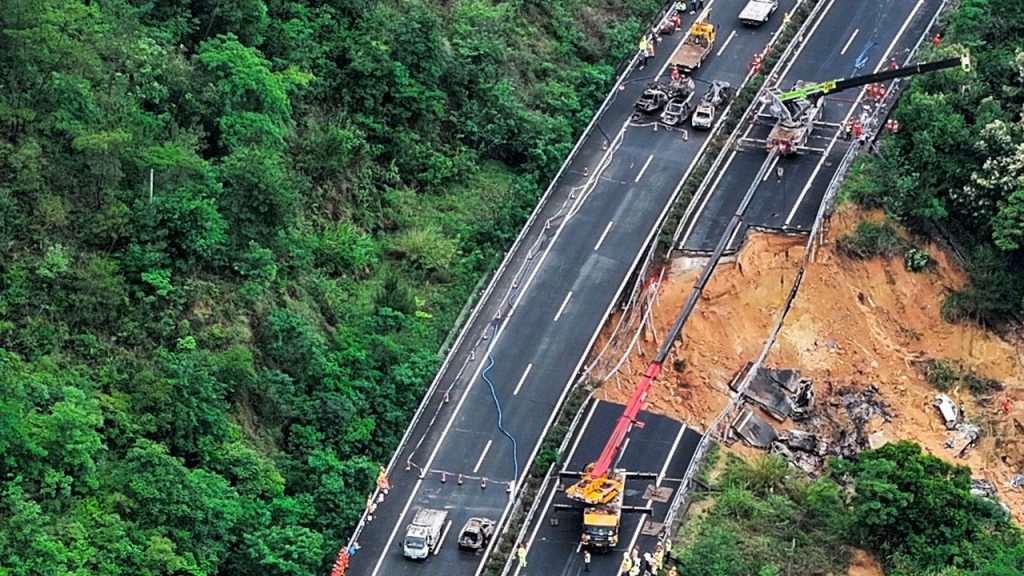A tragic incident occurred in southern China when heavy rains caused a section of a highway in Meizhou city to collapse, resulting in the death of at least 36 people and injuring 30 others. The collapse, which occurred in the early hours of Wednesday, sent 23 vehicles tumbling down a slope. The search and rescue efforts were complicated by ongoing rain, as well as loose gravel and soil at the site. Despite the risks, rescue teams worked diligently to search the area using dogs, life-detecting devices, excavators, and cranes.
The aftermath of the collapse left a stark scar across the green forested landscape, with witnesses reporting hearing a loud noise before seeing a wide hole open up behind them. Images and videos from the scene showed smoke and fire, with blackened cars visible on the slope leading down from the highway. A construction crane was later seen lowering a mangled car to the road surface, alongside other wrecked vehicles that appeared to have been burnt out. The tragic incident is a stark reminder of the dangers posed by heavy rains, especially in mountainous regions where erosion, debris flows, and landslides are a significant risk.
Parts of Guangdong province, including Meizhou, have experienced record rainfall and flooding in recent weeks, leading to multiple incidents of destruction and loss of life. China’s rapid infrastructure development in recent years has resulted in the addition of millions of highway bridges, an extensive high-speed train network, and numerous airports. However, concerns have been raised about the quality and safety of this infrastructure, as flaws in design and construction have been identified in various projects. Tragic incidents like tunnel collapses, floods, and subway drownings have highlighted the importance of regular inspections and maintenance to prevent such disasters.
The risk of heavy rain and flooding on mountain roadways and highway bridges is well-documented, and the incident in Meizhou serves as a somber reminder of the potential consequences of such natural disasters. Inadequate safety measures, combined with the rapid pace of infrastructure development, can lead to disastrous outcomes, as seen in this tragic incident. Efforts to improve safety standards and prioritize maintenance and inspections are imperative to prevent future incidents of this nature.
China’s Belt and Road Initiative, which involves overseas projects such as roads and dams in developing countries, has also faced criticism for design flaws and poor quality. These challenges not only pose a risk to the safety and well-being of local populations but also undermine China’s efforts to build influence and partnerships in the international community. Addressing these issues, improving safety standards, and prioritizing quality in infrastructure projects are essential steps for China to navigate its ongoing development and expansion efforts successfully.


